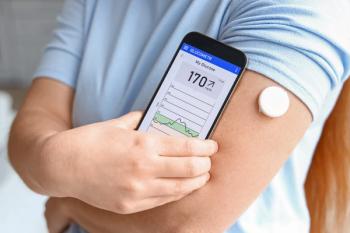
Underserved Patients Less Resilient During Pandemic Than Affluent Communities
Researchers examined the factors attributed to self-reported resilience among diverse and community-dwelling adults during the COVID-19 pandemic.
Patients with higher education, better income, and improved social support were associated with greater self-reported resiliency during the COVID-19 pandemic, according to a study published in JAMA Network Open.1 Highlighting racial and ethnic disparities, underserved patients and communities reported significantly less resilience during this time.
“Resilience, defined as overcoming adversity or bouncing back from hardship, is linked to health and well-being,” wrote authors of the study. “Acute and chronic stress can accelerate biological aging and chronic disease risk through inflammatory, metabolic, and behavioral pathways. Resilience capabilities that mitigate distress severity, support stress recovery, and promote wellness behaviors may influence such downstream effects.”
While far removed from the typical pharmacological treatments that providers are familiar with, the idea of resilience in a medical context has been becoming commonplace. In many cases, resilience is a trait related to mental health. For those lacking resilience, particularly difficult events or times of hardship can induce depression and anxiety.2
However, there are, albeit limited, studies exploring resilience and its impacts on physical health. Researchers of the current study cited how a previous study demonstrated the ability of resilience to reduce hypertension risk over 10 years in adults.
READ MORE:
“Resilience is the extent to which we can bounce back from adverse events, cope with stress, or succeed in the face of adversity,” said Cindy Bergeman, PhD, MS, professor of developmental psychology at the University of Notre Dame.3 “We’re often so busy trying to take care of other people that we don’t do good self-care.”
When discussing the hardships and events that could lead to a patients’ need for resilience, the COVID-19 pandemic is a recent and notable example. Throughout much of the pandemic, widespread hardship was common, impacting patients globally regarding the health, economic, and social aspects of their lives.1
While previous studies have reported on individual experiences with resilience during the pandemic, few have successfully quantified resilience and how it is manifested across patient characteristics.
“In this study, we specifically focus on the bounce-back dimension of resilience, ie, the self-perceived ability to recover from adversity, which represents the core element of resilience as conceptualized by the Brief Resilience Scale (BRS),” wrote the authors.1 “We used data from 14 US prospective cohorts participating in the Cohort of Cohorts for COVID-19 Research (C4R) to assess correlates of self-reported resilience during the COVID-19 pandemic.”
Researchers explored the factors associated with self-reported resilience in racially and ethnically diverse US adults that lived in the community during the pandemic.
Their cross-sectional study design examined 14 established cohorts reporting self-resilience since January 2021. Participants were given a questionnaire and asked to answer questions about their own resilience during the pandemic. The data were analyzed from October 2023 to April 2025.
A total of 31,043 participants (34.9% under 65 years old, 60.1% women) were included in the study.
The key question that constituted patients’ self-resilience was simply “I tend to bounce back quickly after hard times,” with 5 options for patients to choose from for their answer. Those options were agree, strongly agree, disagree, strongly disagree, or neutral. For agree and strongly agree as responses, patients were considered resilient. They were not resilient if they answered disagree, strongly disagree, or neutral.
“In this cross-sectional study of a nationwide meta-cohort of US adults, self-reported resilience was remarkably high but differed by sociodemographic and clinical factors,” continued the authors.1 “Greater self-reported resilience was observed among Black and Hispanic participants, individuals with higher education, married individuals, and individuals with higher income, whereas being female or unemployed was associated with lower resilience.”
Overall, 74.4% of the study population reported that they were resilient. Among the factors leading to low or high resiliency are some of the typical associations the general public is familiar with, as well as some outliers. For example, as researchers noted, they expected factors like high education and income to be associated with resiliency because of how often these same factors translate to improved outcomes, more valued care, etc.
However, Black and Hispanic participants were reported as having the highest self-resiliency during the pandemic; 2 populations that are almost always underserved or experiencing consistent racial disparities within health care and beyond. Researchers owed this finding to the complex interplay between systemic inequities and patients’ ability to adapt.
Similar to the continued calls of increased equality in health care, the researchers suggest that building a resilient society must involve supporting individuals but also the ways in which structural and racial barriers can be taken down.
“As the world continues to grapple with the impacts of the COVID-19 pandemic and other crises, understanding and promoting healthy resilience is important. The findings of this study illustrate the complex interplay of individual, social, and structural factors that shape resilience and emphasize the need for strategies that move beyond individual-level interventions to address broader systemic inequities. Building a more resilient, equitable, and just society requires not only supporting individuals but also dismantling the structural barriers that create vulnerability,” they concluded.1
READ MORE:
Don’t get left behind: Sign up today for our
References
1. Ogungbe O, Wang T, Balte PP, et al. Self-reported resilience during the COVID-19 pandemic. JAMA Netw Open. 2025;8(7):e2520360. doi:10.1001/jamanetworkopen.2025.20360
2. Resilience: Build skills to endure hardship. Mayo Clinic. December 23, 2023. Accessed July 16, 2025. https://www.mayoclinic.org/tests-procedures/resilience-training/in-depth/resilience/art-20046311
3. Nurture your resilience: bouncing back from difficult times. NIH News in Health. April 2022. Accessed July 16, 2025. https://newsinhealth.nih.gov/2022/04/nurture-your-resilience
Newsletter
Pharmacy practice is always changing. Stay ahead of the curve with the Drug Topics newsletter and get the latest drug information, industry trends, and patient care tips.




































































































































